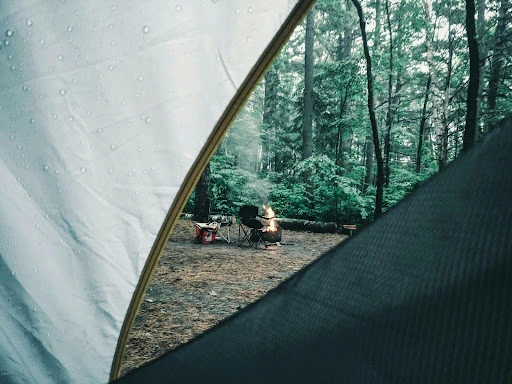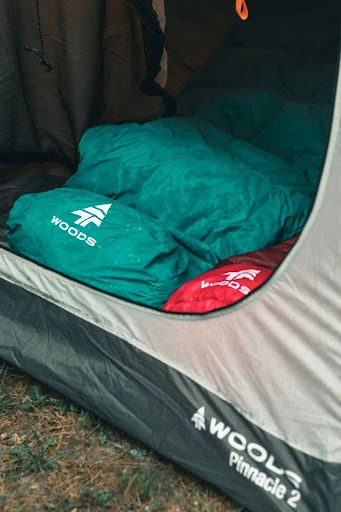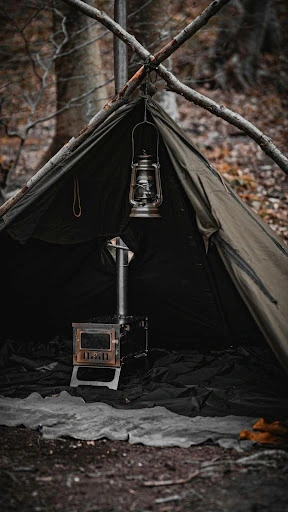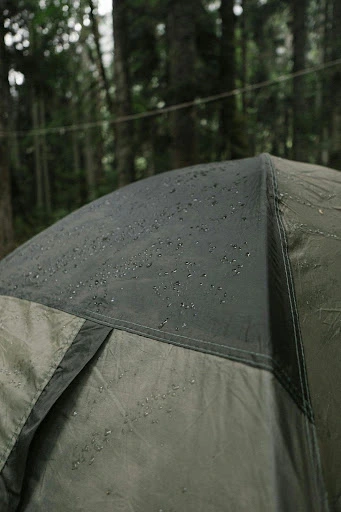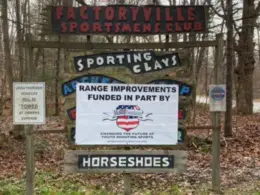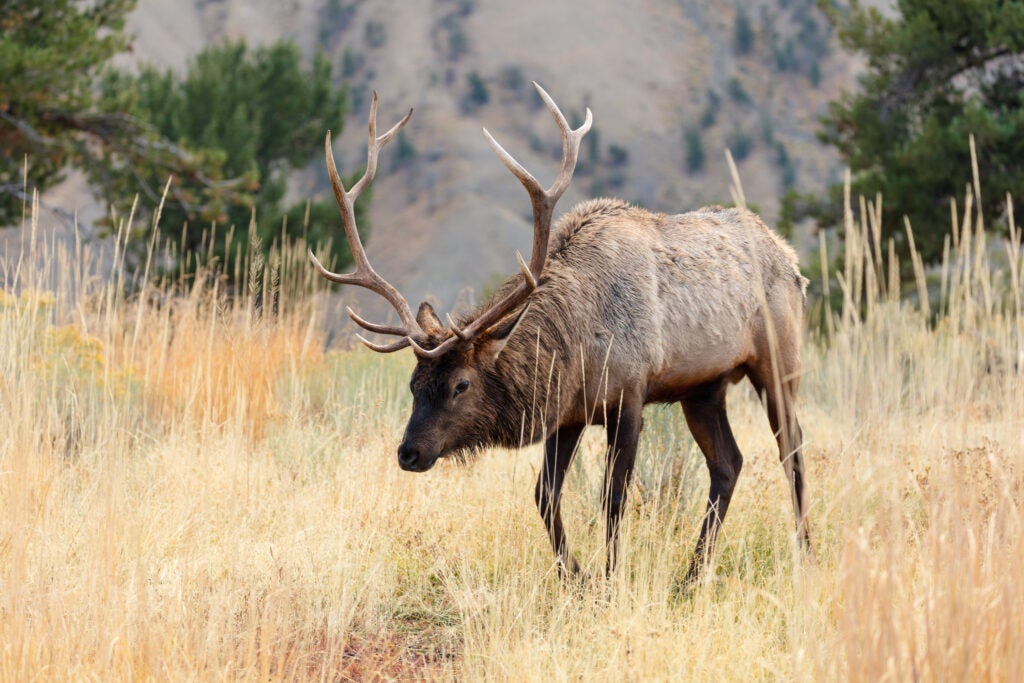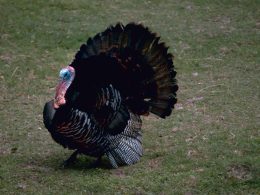During the summer months, condensation in your tent is usually the result of poor ventilation. During the colder months, specifically winter, condensation can become a real problem. There have been many mornings in the winter when I’ve woken up to a soaked sleeping bag because of the condensation from my tent walls dripping down on me.
Luckily, there are some strategies to help mitigate the uncomfortable, cold mornings when water is dripping down on you while you try to sleep. This article aims to teach you the root cause of condensation and how you can avoid it on your next adventure.
Table of Contents
What the Heck is Condensation?
To battle condensation, you must first understand condensation. Condensation is the process where water vapor in the air transforms into liquid droplets upon encountering a cooler surface. This phenomenon occurs because warm air holds more moisture than cold air.
When the surface temperature drops below the dew point, the excess moisture in the warm air condenses into liquid form. In camping, this is commonly observed when the warm, moist air inside a tent meets the cold tent fabric, especially during the fall and winter months.
As temperatures plummet during these seasons, the likelihood of condensation increases, leading to damp sleeping quarters. This moisture build-up can make camping uncomfortable, as it not only makes bedding wet and cold but also increases the risk of mildew and mold.
What Can I Do About Condensation?
So, now that we know that condensation is merely trapped water vapor that condenses into water upon touching the tent wall, we can address different strategies meant to combat it.
Ventilation is Key
Airflow is the solution to most condensation problems in your tent. Ventilation allows the humid air to escape, reducing moisture build-up. The science behind it is simple: by opening tent vents, doors, or windows, you promote air circulation that carries moisture-laden air out and draws fresh, drier air in.
This exchange helps keep the interior dry. Even a small opening can significantly impact moisture reduction. However, it’s essential to balance warmth with airflow. The strategic opening of vents or windows on opposite sides of the tent can create cross-ventilation, which enhances air movement while maintaining warmth.
Choose the Right Tent
When it comes to minimizing condensation, the type of tent you choose plays a huge role.
Double-wall tents are generally more effective in managing moisture than single-wall designs. A double-wall tent consists of an outer rainfly and an inner breathable layer. This setup creates a barrier against external elements while allowing moisture from the inside to escape effectively. The space between the two layers helps prevent condensation from dripping onto you and your gear.
In contrast, single-wall tents, while lighter, often struggle with ventilation, leading to increased moisture build-up. Although, you could get a tent that is mostly mesh at that point you are sacrificing warmth for a reduction in moisture.
When choosing a tent, consider the following features:
- Double-Wall Design: Offers a rainfly and breathable inner layer to improve moisture control.
- Multiple Vents: Enhances airflow, reducing the chance of condensation.
- Breathable Materials: Facilitates the escape of moisture-laden air from inside the tent.
- Sturdy Rainfly: Protects against external elements while aiding ventilation.
Having the right tent will make a huge difference but it’s not the only variable that can affect condensation buildup overnight.
Pick the Right Campsite
Avoid low-lying areas where cold air tends to settle, as these can exacerbate moisture issues. Instead, seek out spots with natural windbreaks, such as trees or rocks. These windbreaks can enhance air circulation around your tent by subtly directing airflow.
While it can seem counterintuitive to have a windbreak since they block direct wind, they help by moderating the airflow, shielding your tent from strong gusts while allowing gentle breezes to circulate.
Manage Source of Moisture
Wet gear and cooking activities are primary contributors to increased humidity levels, which can lead to moisture build-up on tent surfaces. To minimize these effects, always store wet gear outside your tent. Utilize vestibules or tarps to protect your gear from the elements while keeping dampness away from your sleeping area. This simple practice prevents excess moisture from accumulating inside your tent.
You’ll also want to avoid cooking inside the tent as the steam and heat from cooking can significantly raise humidity levels, exacerbating condensation issues. Instead, cook in designated areas outside or under a tarp shelter to keep your living space dry. Of course, if you are using a wood stove then you won’t have to worry about this, but more on that later.
Use Ground Tarps and Footprints
These kinds of tarps or footprints are typically made from durable, waterproof materials like polyethylene or coated nylon, designed to act as a shield between your tent and the damp ground. By placing a tarp or footprint underneath your tent, you create a barrier that prevents ground moisture from seeping through the tent floor and keeping your feet warm. You can even go a step further and add a thick rug to help provide some cushion as well.
Manage Your Temperature
Staying warm without turning your tent into a sauna is another strategy against condensation. Instead of heating the entire tent, focus on staying warm by using sleeping bags and liners designed to trap body heat efficiently.
These essentials create a microclimate around you, keeping you cozy without raising the overall humidity inside the tent, which can lead to increased condensation. However, if you are someone who sleeps warm throughout the night, then you may encounter condensation on the top of your bag or sleeping bag hood from your breath alone. Me, since I burn hot during the night, I will often wake up to my sleeping bag being a bit damp underneath me.
Do Heat Sources Affect Condensation?
To make matters just a little bit complicated, how you heat your tent will also affect the amount of condensation you will encounter during your trip.
Propane Heaters
Propane heaters are popular for tent heating, but they significantly contribute to condensation due to the combustion process. When propane burns, it combines with oxygen to produce carbon dioxide, heat, and notably, water vapor. This water vapor adds to the tent’s interior humidity, creating ideal conditions for condensation, especially when the warm, moist air contacts colder tent surfaces. In cold weather, this effect is even more pronounced, leading to damp tent walls and gear.
Your saving grace is ventilation, ventilation, ventilation. Allowing that water vapor to leave before it condenses is extremely important, especially if you’re using propane to heat yourself.
Wood Stoves
Unlike other heating methods, wood stoves provide ‘dry’ heat, effectively reducing condensation by increasing air temperature and evaporating moisture. Wood stoves create “dry” heat by burning wood, which produces heat without adding moisture to the air. Unlike propane heaters, which release water vapor as a byproduct of combustion, wood stoves primarily emit heat and carbon dioxide.
This process not only warms the air but also helps to maintain low humidity levels inside the tent. The circulation of warm, dry air minimizes the likelihood of condensation forming on tent surfaces.
Final Thoughts
Even armed with these strategies I am still figuring out the best ways to deal with condensation. There is no “perfect” way to deal with the water vapor. Ultimately, it comes down to thermal bridging and how well-injected the shelter is. I can’t guarantee that you won’t encounter it in your travels but at least you will have some extra knowledge on how to deal with it!


